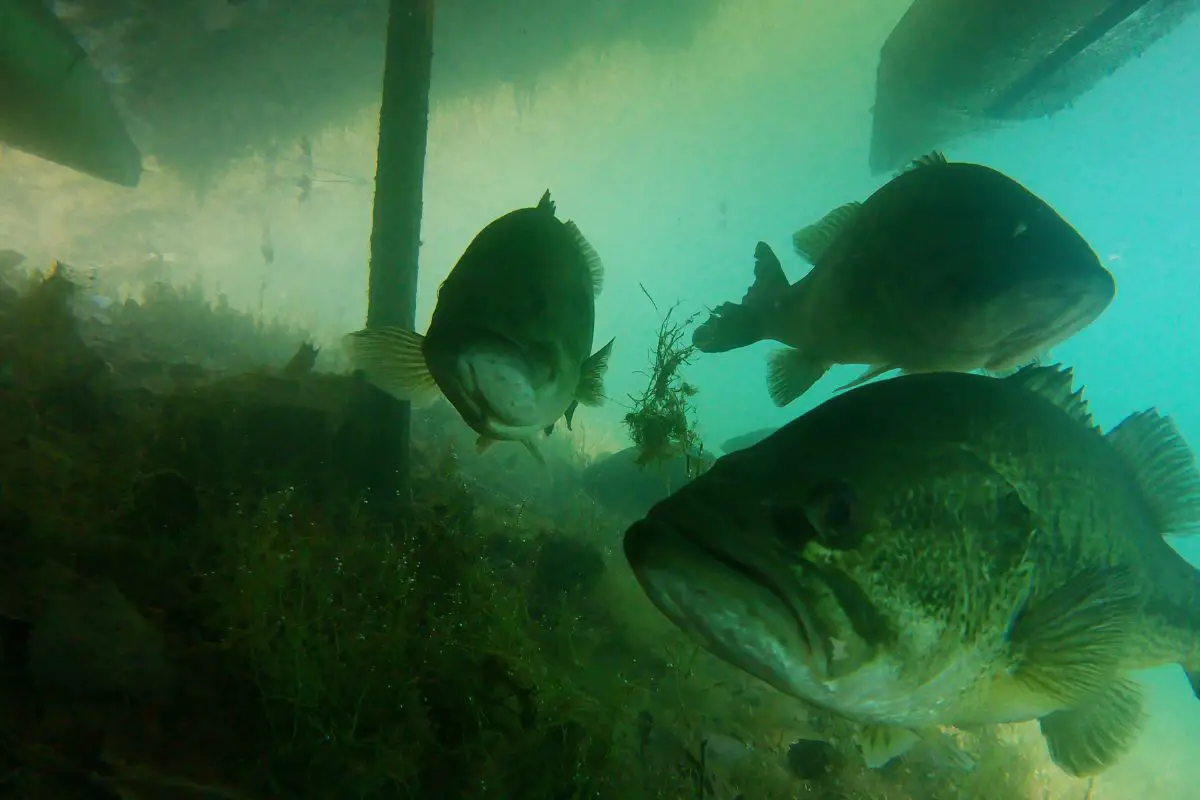Bass anglers have heard this term for decades and it’s just not correct. When observing bass in their natural environment it is clear that they pursue their food sources.
Bass actively hunt their prey. Anglers often mistake reaction bites near cover for bass lying in wait.
Filming bass underwater for the last several years has taught me a lot about their behavior and the common misconceptions we have as anglers.
What the Term “Ambush” Really Means
Merriam-Webster’s definition of ambush is as follows: To attack by surprise from a hidden place.
How We Confuse This Term and Bass Behavior
Think about pitching a soft plastic or a jig to a dock post. The lure drops down vertically alongside the structure and suddenly you see the line jump.
You set the hook on a 5lb’er and are beyond happy.
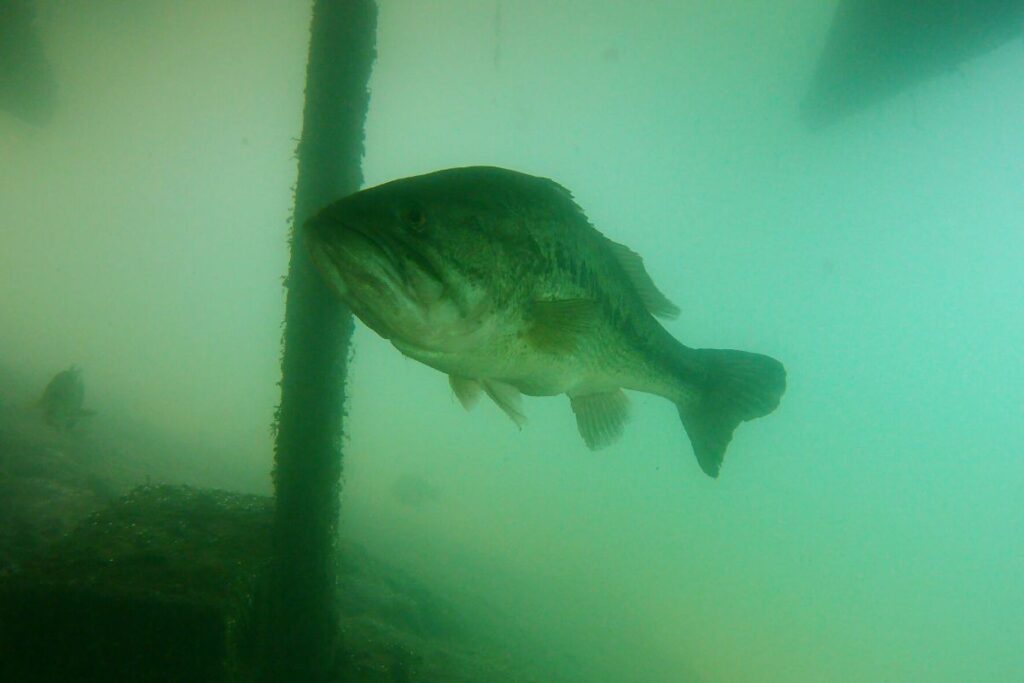
In our mind, we envision the bass sitting there, motionless, waiting for prey to happen by. They then attack.
Bass are most often in one of two general moods – loafing and feeding.
Sometimes when bass are loafing, they sit in a confined area. That could be suspended along a dock post like mentioned above, it could be circling under the shade of a dock or laydown, or slowly meandering down an edge.
The point is, they are not actively pursuing prey.
What actually happens when we catch that loafing bass on the dock post is an instinctual reaction bite.
Our lure flashes right by the bass and it reacts. It is exactly like how we would respond if someone kept flicking their hands in our face or if a bug buzzes by our head.
A reaction bite is the most powerful tool a bass angler has because it forces bass to eat when they don’t want to and don’t intend to. This is why we mistake our favorite gamefish for an ambush predator.

And it is easy to see why we make this incorrect assumption. We can’t see what is happening from above the water. All we know is that we caught a bass near cover.
How True Ambush Predators Behave
Fish that are true ambush predators are masters of camouflage. They hide, blended into their environment, and wait for prey to pass by.
A perfect example of this is a halibut.
This ocean fish will sit, motionless, flat on the bottom of the sea, and bury itself into the surrounding silt, sand, and debris. The fish is nearly invisible as you can see from the below photo.
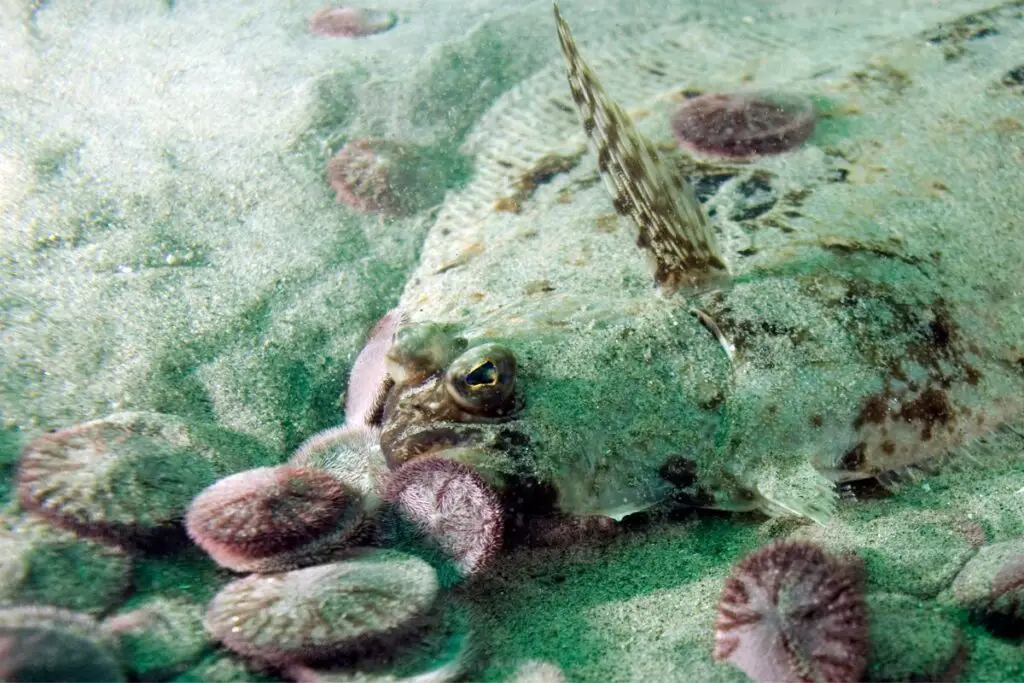
This is not what bass do at all. Even when they are positioned under brush or in weeds, they by no means have the concealment expertise that true ambush predators possess.
What I’ve Witnessed Filming Underwater
When bass are hungry they will actively roam and hunt. In fact, bass are moving about much more than we realize.
During all my hundreds of hours filming underwater, I see them moving probably 80-90% of the time. Even when they are holding under something like a dock, they still wander from one end of the dock to the other.
In the below snapshot, I was filming a Rage Swimmer in open water when this nice largemouth came from nowhere and demolished it. When watching the actual video it is interesting to see the bass appear from the distance and chase down what it thought was prey.
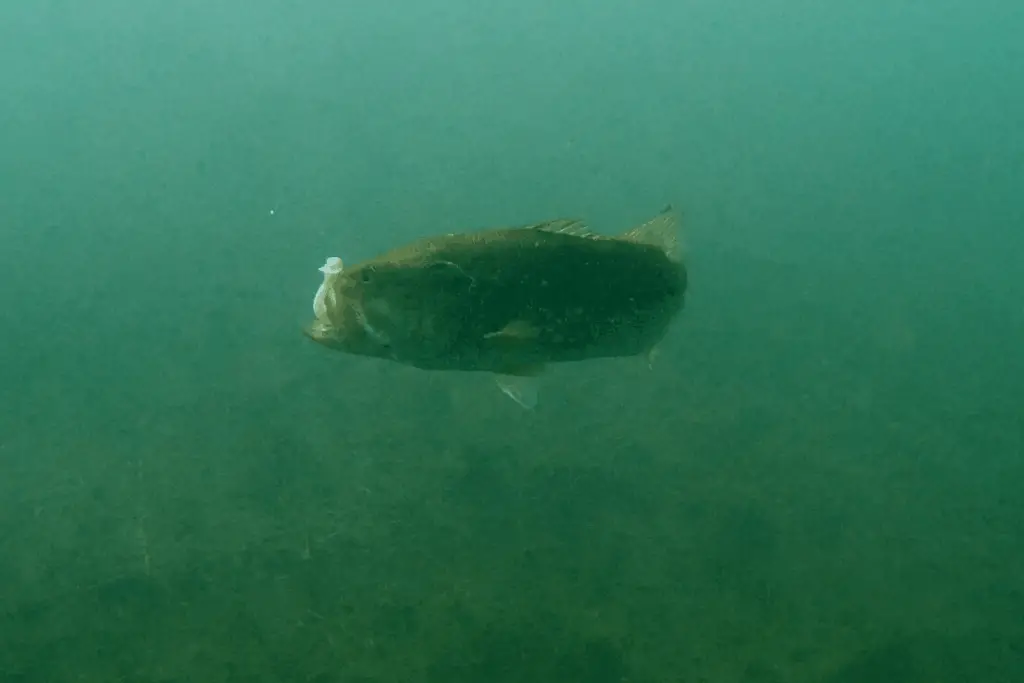
I have also observed hundreds of times how curious bass are. This has been a pattern I have seen repeated again-and-again.
For example, a lure will fall through the water column and rest on the bottom. While it is dropping, bass will come from all over to see what the commotion is. They will follow the lure down, observe it, and most often swim away. Usually, this swimming away happens right after we give the lure a big hop.
If we actually knew how often this happens, it would be quite disheartening. And believe me, I have seen it happen many times.
(Here is an article about how to cast finesse lures a distance.)
Bass Will Aggressively Chase Down Prey
One of the most powerful presentations in bass fishing is the “fleeing” baitfish method.
When bass witness prey species attempting to escape, their feeding instinct kicks in and they want in on the action. Skipping and hopping a soft jerkbait across the surface of the water on the retrieve is dynamite for this.
Many times in the clear water lakes around me I have watched bass dart 30-50ft to crush a soft jerkbait. That is the exact opposite of what an ambush predator will do.
So How Does Understanding Bass are not Ambush Predators Help Anglers?
This is a great question and the real key is understanding what a reaction bite is and how to elicit these types of strikes.
When bass are actively feeding, we are going to catch them. Unfortunately, this “active” period does not happen as often as we would hope for.
There are two types of reaction bites we can generate. Those that are used with horizontally presented lures and then vertical presentations.
When using lures brought back horizontally in the water column, like jerkbaits and squarebills, our goal is to get them to change direction and speed as often as possible. This start-stop and deflection approach draws the reactions we are looking for from bass that are not actively feeding.
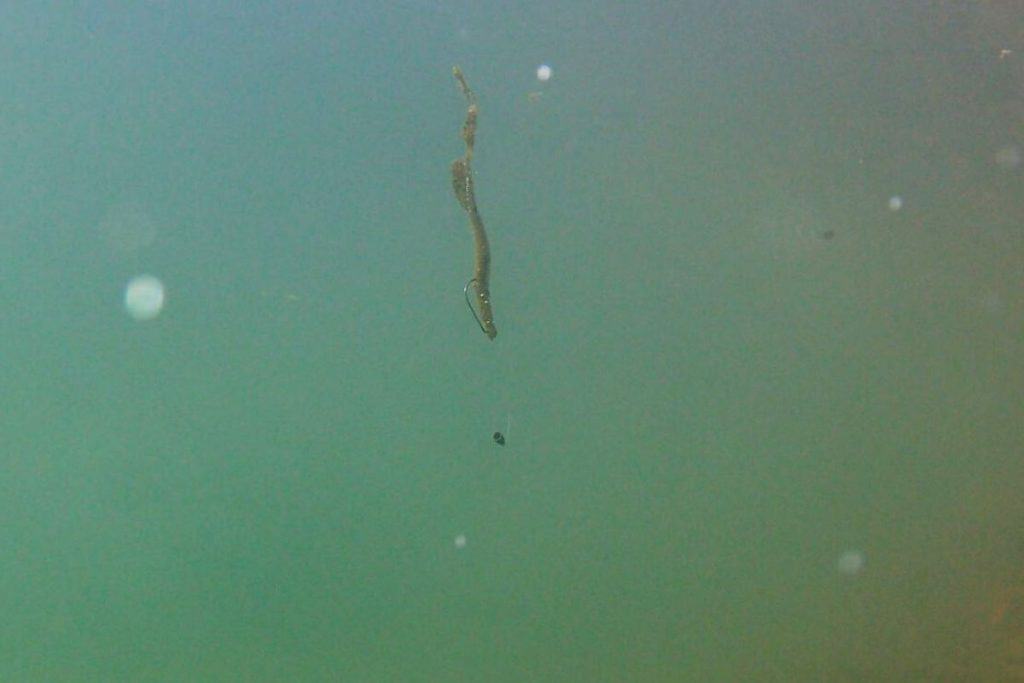
For lures that are presented vertically, like jigs and Texas rigs, the most powerful portion of the presentation is the drop.
(Here is an article about the best line for fishing soft plastics.)
We want that lure to fall as close to the bass as possible and get them to react. In clear water, this means a faster drop is often best, and slower in water with less clarity. It is also critical to place the vertically dropped lure close to the area we envision the fish hanging out or cruising.
How to Present the Lure Once it is on the Bottom
We must remember bass are very curious. Odds are, if there was a largemouth or smallmouth in the area your lure fell through, they are quite aware of it.
After watching bass underwater, I prefer to let my lures sit almost motionless, or stitch them along the bottom. My goal is to make them look like a real crawdad, or other lifeforms, that are slowly moving along.
I try to save my hops and rips for moments when the jig or soft plastic grabs some vegetation, gets pinned on a log, or some other place where that change of direction and speed can draw the reaction strike.
As anglers, we so often fall into the trap of fishing our lures at middle speeds. In other words, we don’t fish them slow enough or fast enough. The middle is the worst place to be as an angler unless the fish are aggressively feeding and then the margin for error is much more forgiving.
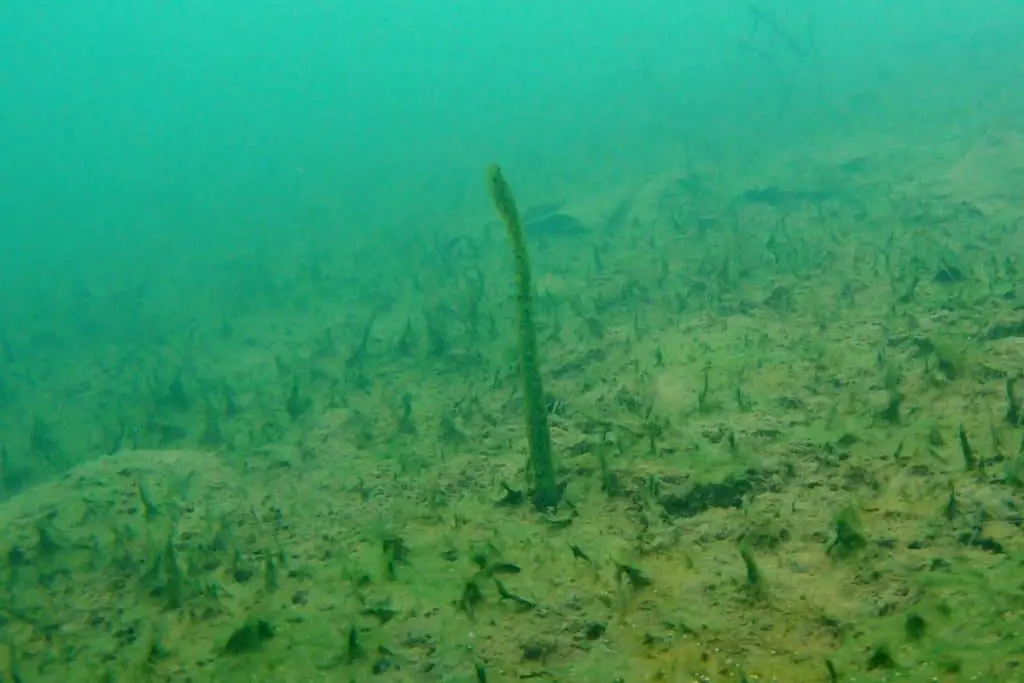
Final Takeaways on How to Get Bass to Strike
We need to really think about our presentations as super slow and lifelike or as reaction presentations. Once again, at either end of the speed spectrum.
When we realize that bass hanging close to cover are not ambushing prey, but reacting to something flashing by them, it helps us understand how to adjust weights, locations, and lure type to draw those strikes.
Something as simple as adding a heavier weight to our Texas rigs can make a huge difference. A faster flash by the fish is often what it takes to get them to respond.
Good luck out there and make sure to encourage someone today. You never know how you may change their life forever.
Isaiah 6:8

